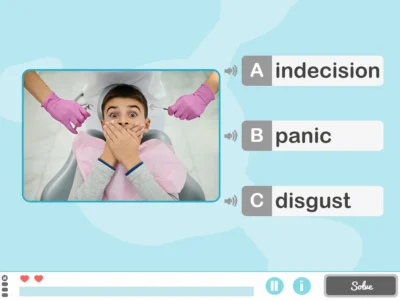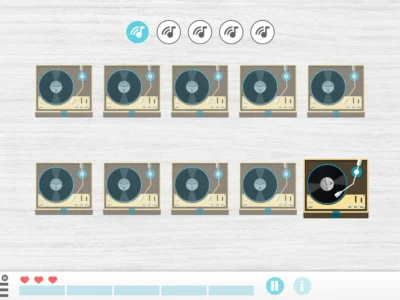Discover how universities are integrating technology and real clinical practice into training in cognitive health, neuropsychology and neurorehabilitation.
Introduction
University training in cognitive health, neuropsychology and neurorehabilitation has undergone a significant transformation in recent years.
Factors such as advances in the neurosciences, population aging, the increase in neurodegenerative and neurodevelopmental disorders, and the growing demand for professionals trained in cognitive stimulation and rehabilitation require an urgent update of curricula in areas such as neuropsychology, occupational therapy and speech-language pathology.
Universities and educational institutions face the challenge of updating their academic programs and methodologies, integrating emerging technologies and interdisciplinary approaches that respond to both scientific advances and the real needs of the clinical and social environment.
This educational evolution seeks to prepare professionals capable of intervening effectively in complex, changing and increasingly demanding contexts.
Why is it crucial to rethink university training in cognitive health?
Traditionally, training programs in areas such as neuropsychology, speech-language pathology or occupational therapy have offered a solid theoretical foundation. However, once this educational training is completed, many students face the job market with limited knowledge about how to apply what they’ve learned in real clinical contexts. This created a gap between academic theory and professional practice that, today, is no longer acceptable.
Rethinking university training in cognitive health has become essential in light of the profound sociodemographic, scientific and technological changes shaping the present. The accelerated aging of the population, the increase in neurodevelopmental disorders and acquired brain injury, as well as the high prevalence of neurodegenerative diseases such as Alzheimer’s and Parkinson’s require highly qualified professionals capable of responding to complex and constantly evolving clinical contexts (Prince et al., 2015; WHO, 2021).
Moreover, advances in cognitive neuroscience and neurotechnology have expanded our understanding of the human brain, opening new possibilities for cognitive assessment and intervention. This scientific evolution must be reflected in training programs, which require continuous updating based on evidence, with an interdisciplinary approach that integrates knowledge from neuropsychology, neurology, speech-language pathology, occupational therapy and technologies applied to health (Ardila, 2018).
On the other hand, the demands of the current clinical and social environment require more practical training focused on real competencies. Various studies emphasize that a teaching approach based on active learning, the analysis of real clinical cases and the use of advanced educational technologies significantly improves the performance of future professionals (Harden, 2018; O’Neill et al., 2020). This is key to training profiles capable of intervening effectively in the promotion, prevention and rehabilitation of cognitive functions at different stages of the life cycle.
New professionals must be prepared from day one to practice their profession with the competence required, design personalized cognitive stimulation programs, conduct and apply neuropsychological assessments and use technologies that optimize their interventions. Therefore, it is essential to integrate digital tools and active methodologies into curricula that simulate —or even replicate— the real clinical environment.

Subscribe
to our
Newsletter
The transformative role of new technologies in university teaching
New technologies are revolutionizing university teaching, especially in fields such as neuropsychology and neurorehabilitation.
Digital tools such as virtual reality, artificial intelligence, clinical simulators and interactive platforms allow more immersive and personalized training. These technologies facilitate the understanding of complex neurocognitive processes, the simulation of real clinical cases and the assessment of practical skills in controlled environments.
Recent studies have shown that the use of emerging technologies significantly improves knowledge retention, student motivation and the development of clinical competencies (González-Gómez et al., 2021; Mayer, 2020). In addition, the integration of adaptive digital platforms favors autonomous learning and individualized monitoring of academic progress, aligning with the principles of neuroeducation and meaningful learning.
In the field of neuropsychology, these tools not only enrich theoretical training, but also prepare the student to face the changing reality of clinical settings, where the use of assistive technology and cognitive stimulation software is increasingly common.
In this sense, solutions like NeuronUP, a professional platform for cognitive stimulation and rehabilitation based on scientific evidence in cognition and neuropsychology, are making a significant difference in health education. Originally designed for the clinical setting, NeuronUP has begun to be integrated into universities as a teaching resource, bringing students closer to the work they will perform as professionals in real contexts.
NeuronUP and university training: an alliance for the future
NeuronUP has taken a step forward with its initiative NeuronUP University, a solution designed to facilitate practical teaching of rehabilitation and cognitive stimulation in university settings.
This version of the platform allows teachers and students to work with real digital activities, design intervention programs, analyze results and study real clinical cases from the classroom.
Benefits of NeuronUP for students, teachers and universities
Benefits of NeuronUP for students
For students it represents a first direct contact with a tool widely used in clinics, hospitals and centers that provide cognitive stimulation and rehabilitation.
This allows them to gain practical experience from early stages of their training, creating simulated sessions to analyze cognitive profiles and design intervention plans. Additionally, it also allows them to obtain a certificate that attests to their mastery of the tool, which significantly improves their employability.
Benefits of NeuronUP for teachers
For teachers, it represents an opportunity to enrich their classes with real clinical cases, monitor the individual progress of students and adapt teaching to a more dynamic, active and collaborative approach.
Benefits of NeuronUP for universities
For universities, implementing NeuronUP University represents an improvement in teaching quality and a commitment to technological innovation, positioning them as leaders in applied training in cognitive rehabilitation.
Curricular integration: much more than technology
Integrating digital tools like NeuronUP into curricula is not just a matter of technology. It is a broader methodological transformation, which involves:
- A clinical practice-based approach: the use of digital tools allows the student to face real situations, solve concrete problems and design personalized interventions, replicating the day-to-day of their future profession.
- Interdisciplinarity: NeuronUP can be used by different professional profiles: psychologists, neuropsychologists, occupational therapists, speech-language pathologists, and even educational psychologists. This fosters collaborative training that is closer to current healthcare practice, based on interdisciplinary teams.
- Continuous and personalized assessment: teachers can evaluate their students’ learning continuously, objectively and individually, thus promoting a constant improvement in their performance.
Conclusion
University training in cognitive health is undergoing a transformation, driven by the need to prepare professionals capable of intervening effectively in complex and changing clinical contexts.
The integration of emerging technologies and digital tools into curricula, such as the NeuronUP University initiative, represents a significant step toward a more practical, digital education connected to clinical reality.
With this commitment to university training, NeuronUP reinforces its commitment to improving cognitive health from a comprehensive perspective. It not only provides a tool to practicing professionals, but also helps train the new generations of psychologists, neuropsychologists, therapists and health specialists who will respond to upcoming and future cognitive challenges.
If you are a university lecturer and/or coordinator of university health training, we invite you to discover how NeuronUP can transform your curricula and optimize the training of your students.
Request a meeting with our team
Learn how NeuronUP can optimize the prestige and academic offering of your university with its innovative resources. Complete the form and our team will advise you without obligation.
Bibliography
- Ardila, A. (2018). Neuropsychology: Science and practice. Springer.
- González-Gómez, D., Jeong, J. S., & Cañada-Cañada, F. (2021). The use of flipped classroom and gamification in higher education: A systematic review. Computers & Education, 169, 104-121. https://doi.org/10.1016/j.compedu.2021.104121
- Frenk, J. et al. (2010). Health professionals for a new century: transforming education to strengthen health systems in an interdependent world. The Lancet, 376(9756), 1923–1958. https://doi.org/10.1016/S0140-6736(10)61854-5
- Gutiérrez, I., & Pérez, E. (2020). Educational technology applied to university training in health: challenges and opportunities. Revista de Educación y Futuro, (53), 45–62
- Harden, R. M. (2018). Ten key features of the future medical school—not an impossible dream. Medical Teacher, 40(10), 1010–1015. https://doi.org/10.1080/0142159X.2018.1498613
- Issenberg, S. B., et al. (2005). Features and uses of high-fidelity medical simulations that lead to effective learning: a BEME systematic review. Medical Teacher, 27(1), 10–28. https://doi.org/10.1080/01421590500046924
- Mayer, R. E. (2020). Multimedia Learning (3rd ed.). Cambridge University Press. https://doi.org/10.1017/9781316941355
- NeuronUP. (n.d.). Cognitive stimulation software for professionals. https://neuronup.com
- NeuronUP. (2025, May 26). NeuronUP sets a new course in university training in cognitive health. News3Edad. https://www.news3edad.com/2025/05/26/neuronup-marca-un-nuevo-rumbo-en-la-formacion-universitaria-en-salud-cognitiva/
- O’Neill, G., Donnelly, R., & Fitzmaurice, M. (2020). A handbook for teaching and learning in higher education: Enhancing academic practice (4th ed.). Routledge.
- Pellas, N., Fotaris, P., Kazanidis, I., & Wells, D. (2020). Augmented Reality and Virtual Reality in education: A systematic review of the literature. Education and Information Technologies, 25(6), 4161–4195. https://doi.org/10.1007/s10639-020-10140-1
- Prince, M., Wimo, A., Guerchet, M., Ali, G.-C., Wu, Y.-T., & Prina, M. (2015). World Alzheimer Report 2015: The Global Impact of Dementia. Alzheimer’s Disease International.
- Ríos-Hernández, R., & Díaz-Noguera, M. D. (2022). Digital transformation in university teaching: post-pandemic challenges and opportunities. Revista de Educación a Distancia (RED), 22(70). https://doi.org/10.6018/red.470671
- Ruiz Moral, R., & García de Leonardo, C. (2021). New teaching methodologies in the health sciences. Educación Médica, 22(2), 61–66. https://doi.org/10.1016/j.edumed.2020.12.001
- World Health Organization (WHO). (2021). Global status report on the public health response to dementia. https://www.who.int/publications/i/item/9789240033245
- World Health Organization. (2021). Transforming and scaling up health professionals’ education and training: WHO guidelines 2021. https://www.who.int/publications/i/item/9789240034702
If you enjoyed this blog post about university training in cognitive health, you will surely be interested in these NeuronUP articles:
“This article has been translated. Link to the original article in Spanish:”
Formación universitaria en salud cognitiva: hacia una educación práctica, digital y conectada con la realidad clínica







 Hydration and attention: the clinical impact of an underappreciated relationship
Hydration and attention: the clinical impact of an underappreciated relationship
Leave a Reply